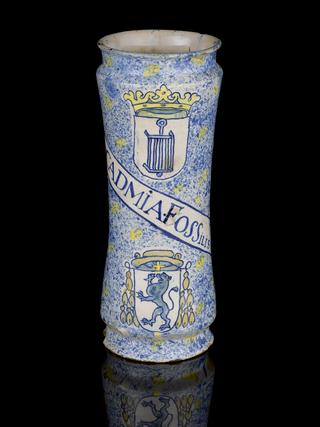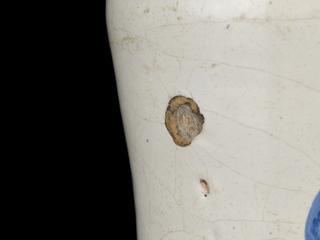




Syrup jug, Italian from Deruta in 1648, fine polychrome maiolica, used for scabwort water
The Latin inscription painted on the side, Aqua Scabiosae, translates into English as “Scabious Water”. Water infused with pink, white and blue scabious flowers was stored in this earthenware jar, probably with a protective cover of vellum or paper tied with string.
The water was drunk to expel phlegm from the body, especially if coughs and colds were affecting the chest. Taken with theriac – an expensive thick sticky liquid medicine made from numerous ingredients – the treatment was used against plague.
Details
- Category:
- Medical Ceramic-ware
- Collection:
- Sir Henry Wellcome's Museum Collection
- Object Number:
- A632277
- Materials:
- whole, earthenware (tin-glazed polychrome)
- Measurements:
-
overall: 328 mm x 268 mm x 272 mm, 3.625 kg
- type:
- syrup jar




